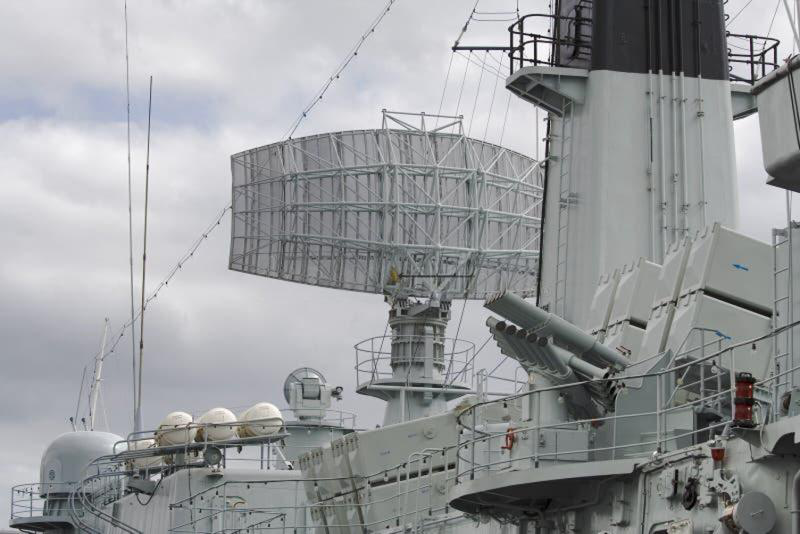
When the roar of steel met the silent pulse of silicon, a new chapter of naval warfare was written. During the mid-20th century, semiconductors, then a mysterious, cutting-edge innovation, began quietly reshaping the mechanical heart of vintage battleships and artillery systems.
At a time when war machines relied heavily on mechanical precision, the introduction of electronic control made every shot faster, sharper, and deadlier. Behind this revolution were engineers, skilled craftspeople, and experienced manual machinists who combined traditional craftsmanship with modern electronics to build weapons that changed history.
The Birth of Semiconductor Warfare
Long before semiconductors powered smartphones and computers, they found their earliest, most secretive use in military applications. During the 1940s and early 1950s, naval research labs in the United States, the United Kingdom, and Germany began experimenting with solid-state diodes to improve targeting systems on heavy artillery and naval guns.
These early semiconductors replaced unreliable vacuum tubes, allowing for faster signal processing, greater temperature resistance, and miniaturized circuitry vital qualities aboard warships constantly exposed to heat, salt, and vibration.
In many ways, the world’s first smart weaponry systems were born on steel decks surrounded by roaring seas.
Cutting-Edge Technology at the Time
For its era, semiconductor-based artillery was revolutionary. Traditional mechanical fire-control systems relied on gears, cables, and manual input, which meant that targeting had limits in precision and speed.
With semiconductor circuits, however, calculations for distance, wind drift, and target movement could be automated. This gave gunners the ability to fire faster, adjust aim automatically, and reach targets further away with remarkable accuracy.
Ships equipped with these new systems such as the late-WWII Iowa-class battleships and experimental postwar cruisers boasted advanced radar-linked guns that could hit moving targets miles away with only a few seconds’ delay.
It was a technological leap that turned ordinary cannons into electronic artillery systems, a fusion of analog steel and digital precision.
Automation and Tactical Advantages
The integration of semiconductors into naval artillery control was more than just a mechanical upgrade; it represented the birth of automated warfare.
- Rapid Fire: Semiconductor logic enabled automatic re-aiming between shots, drastically increasing the rate of fire.
- Precision: Electronic sensors adjusted gun elevation in milliseconds, aligning perfectly with radar tracking.
- Extended Range: With improved trajectory calculation, artillery could now reach targets previously out of range.
- Reliability: Semiconductors didn’t burn out as easily as vacuum tubes, reducing maintenance in high-stress combat conditions.
- Crew Safety: Automation meant fewer crew members had to be exposed during battle, saving lives while improving coordination.
These innovations paved the way for what would later evolve into computer-guided missile systems and the early prototypes of the digital fire-control systems used in today’s navies.
The Craftspeople Behind the Circuits
Behind every innovation stood thousands of mechanicians, engineers, electrical assemblers and machinists who turned laboratory theory into working metal.
At shipyards in Newport News (USA), Portsmouth (UK), and Kiel (Germany), these workers crafted precision metal frames and turret mounts to accommodate delicate circuit boards. Many had backgrounds in watchmaking, precision tooling, or early radio assembly skills that made them invaluable in bridging the gap between mechanical and electronic engineering.
Their ability to integrate transistor circuits with mechanical systems marked one of the greatest cross-disciplinary achievements in early modern warfare technology.
Material Sourcing and the Global Supply Chain
Early semiconductor manufacturing required extremely pure materials, especially germanium and silicon. However, not every country had the natural resources or refining capacity needed.
Here’s where the global effort came into play:
- Silicon was primarily sourced from the United States and Japan, thanks to their emerging electronics industries.
- Germanium came from Canada, Belgium, and Russia, where mining output met military-grade purity standards.
- Copper and gold, essential for wiring and connectors, were supplied by South Africa and Australia.
- Tungsten and molybdenum, used in high-temperature alloys, were imported from China and Bolivia.
This early international sourcing network set the foundation for the global semiconductor trade that dominates today’s technology markets.
Academic and Research Origins
The intellectual birthplaces of these early military semiconductor systems were the elite universities and laboratories of their time.
- In the United States, the Massachusetts Institute of Technology (MIT) and Harvard’s Radio Research Laboratory collaborated with the Navy’s Bureau of Ordnance.
- In the United Kingdom, Cambridge University and Bletchley Park engineers explored semiconductor-based radar and targeting systems.
- Germany’s Göttingen University and Kaiser Wilhelm Institute worked on advanced electronic fire-control models.
Many of these institutions maintained secrecy for decades, as their research fed directly into national defense programs. It wasn’t until the 1970s that detailed records of these projects began to surface in declassified documents.
The Secrets and the Silent Wars
The introduction of semiconductors to military hardware was treated as top-secret intelligence. Nations feared that revealing this technology would compromise their naval dominance.
Espionage became rampant. During the early Cold War, Soviet and Western agents sought blueprints, components, and even university research notes. Several diplomatic confrontations in the 1950s quietly buried in archives stemmed from stolen semiconductor patents and intercepted shipments.
It was not a war of gunfire, but of information and innovation, where engineers and scientists were as valuable as soldiers.

Legacy and Evolution
The semiconductor’s debut in vintage battleships marked the beginning of a new age: the automation of warfare. What began as an experiment in improving gun accuracy led to the birth of guided missiles, digital sensors, and computerized control systems.
The legacy of those first mechanicians, machinists, and craftspeople lives on in every piece of advanced defense equipment today. Their combination of hands-on skill and forward-thinking innovation bridged the gap between the mechanical and electronic worlds, forever changing how nations build and fight.
Conclusion
When Silicon Met Steel is not just a story of machines it’s a story of people, ingenuity, and the dawn of modern technology. From the decks of vintage battleships to the clean rooms of today’s chip factories, the semiconductor’s journey began with a spark of war-time necessity and grew into the foundation of our digital world.
Behind every piece of silicon that powers modern life lies the legacy of those experienced mechanicians, skilled craftspeople, and qualified machinists who dared to wire the future into steel.

